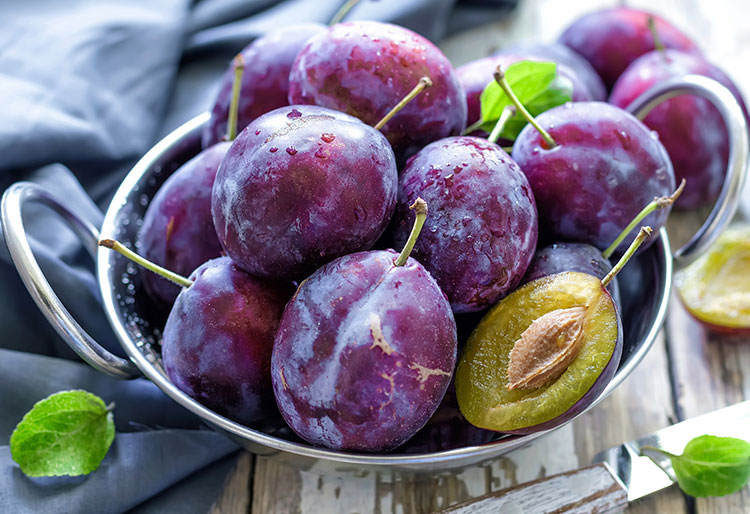Plums: properties, types and benefits
Yellow, red, green, raisins, ... plums are a very refreshing fruit. We tell you the main types and what are the properties and benefits
fresh food
Share

The plum is a popular fruit for eating in spring and summer. It is the fruit of the plum tree (Prunus domestica), which belongs to the Rosacea family and to the prunus genus, like the peach and the nectarine, Yellow, red, green, mauve, purple, black… plums are a very refreshing fruit with a flavour which is mid-way between acid and sweet.
In Spain, the majority of varieties are grown in Lleida, Aragón, Seville and in the Mediterranean zone. The season for finding fresh, ripe plums in the market is from the end of April to September.
Eating plums with their skin on is highly recommended, as this is where the majority of vitamins are found. This fruit can also be used to prepare jams, marmalades, jellies and sauces to accompany many recipes. They can also be eaten dry (prunes), stewed and as an accompaniment to different dishes.
Eating plums with their skin on is highly recommended, as this is where the majority of vitamins are found.
Varieties
Currently, there are over 200 varieties which are normally classed according to their colour and size. Some of these are:
• Yellows: characterised by their acidic flavour and abundant juice.
• Reds: are juicier and have a sweeter flavour than the yellow ones.
• Piel verde o ‘Claudia’: are notable for their sweet aroma.
• Blacks: their skin is a darkishblue, and these are the best for stewing.

Properties
They are primarily known for being a remedy for constipation, but plums have many other hidden health benefits.
- They prevent constipation and assist with intestinal transit thanks to the fibre they contain. They also contain a large quantity of water.
- They are low in calories and high in potassium, a mineral which is essential for good muscle function. They also contribute to the normal functioning of the nervous system and maintaining a healthy blood pressure.
- Their high vitamin A content helps to metabolise iron, thereby preventing anaemia, and it also helps the immune system to function well.
-Its flavonoids have antioxidant properties that help to combat free radicals.
Benefits of plums
• They are a very energy-rich, refreshing and light food, which is able to stimulate the nervous system.
• They are recommended for those who are overweight due to their low-calorie content.
• They help to maintain our skin, mucous membranes and sight healthy, due to their high vitamin A content.
Recipes
Pasta con ciruelas y espinacas







